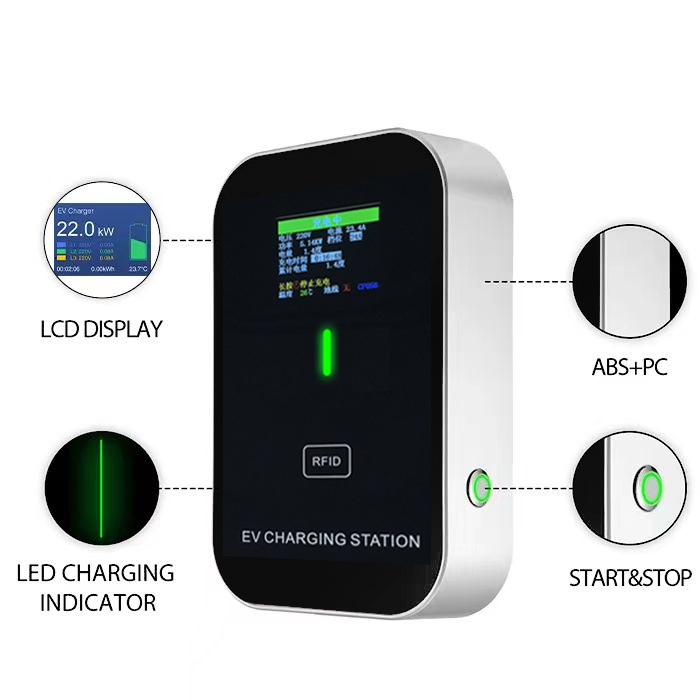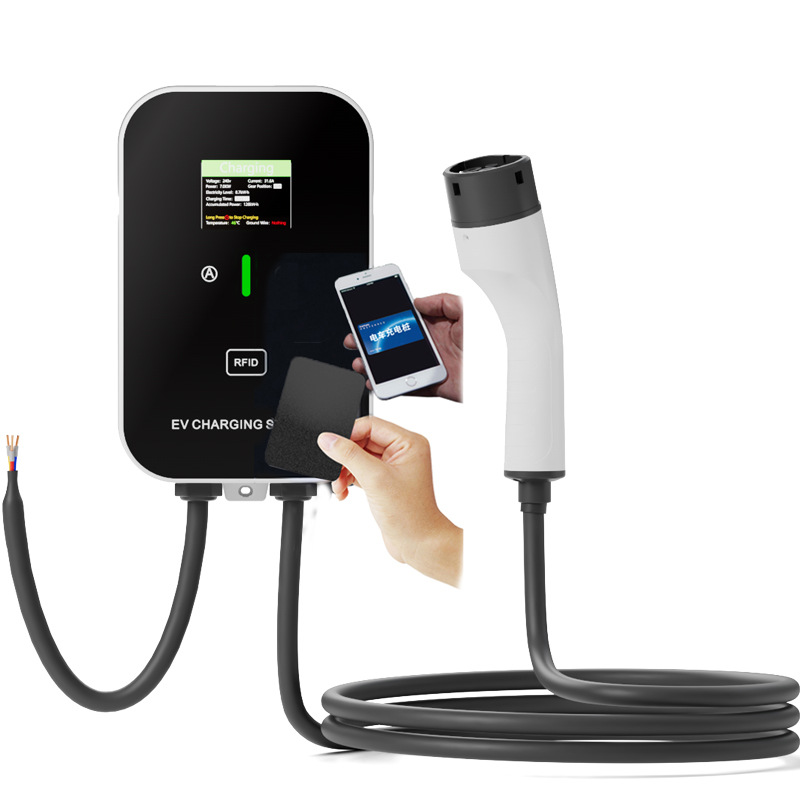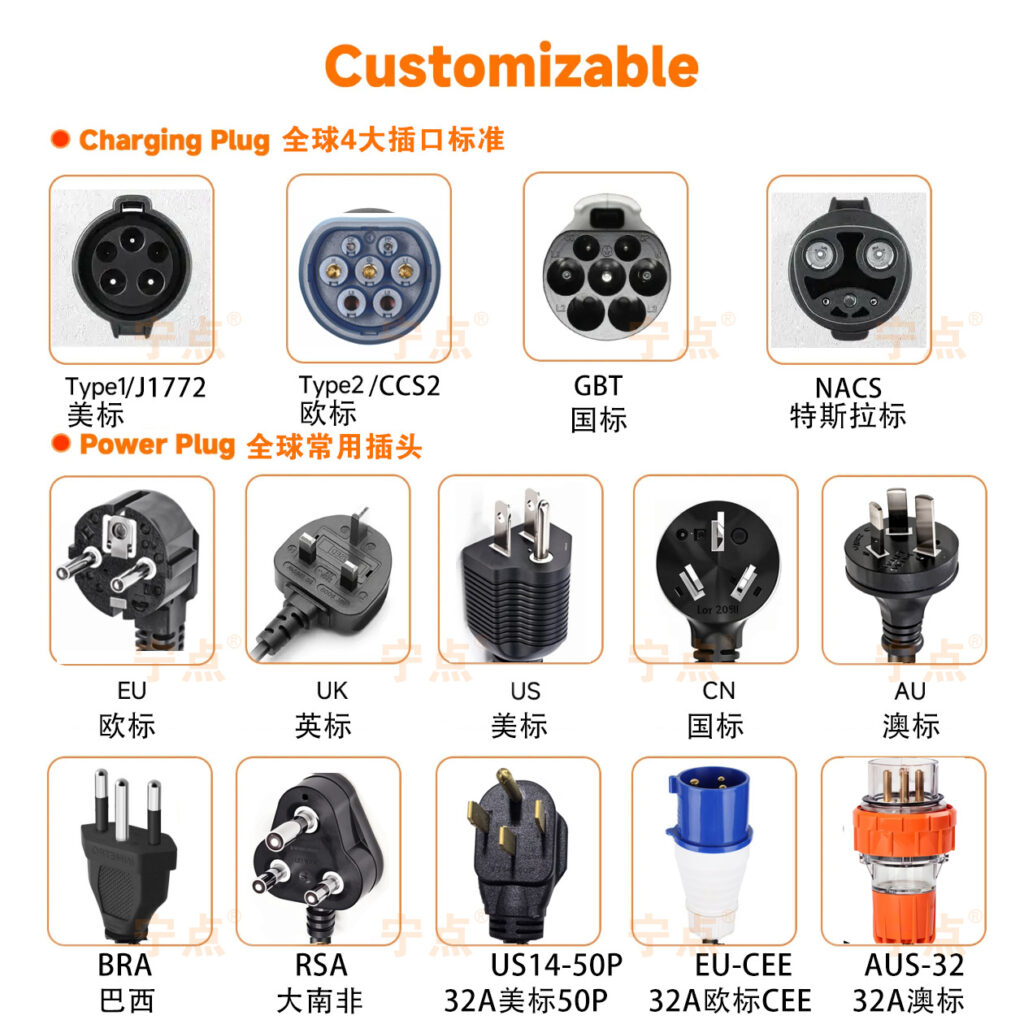Introduction to EV Charging Infrastructure
The global electric vehicle market is projected to grow at a CAGR of 21.7% from 2023 to 2030, making EV charger stations a critical component of modern transportation infrastructure. This guide explores the technical specifications, geographical differences, and practical applications of various EV charging solutions.

Section 1: Comprehensive Classification of EV Charger Stations
1.1 By Charging Speed and Power Output
Level 1 Chargers (Trickle Charging)
- Voltage: 120V AC (North America) / 230V AC (Europe)
- Power Output: 1-1.8 kW
- Charging Rate: 3-5 miles of range per hour
- Typical Use: Emergency charging, residential overnight use
Level 2 Chargers (Standard Charging)
- Voltage: 208-240V AC
- Power Output: 3.7-22 kW
- Charging Rate: 12-80 miles of range per hour
- Connector Types: J1772, Type 2 Mennekes
DC Fast Chargers (Rapid Charging)
- Voltage: 200-1000V DC
- Power Output: 50-350 kW
- Charging Rate: 60-20 miles per minute
- Major Standards: CCS, CHAdeMO, GB/T
Ultra-Fast Chargers (Next-Gen Solutions)
- Voltage: 800V+ systems
- Power Output: 350-900 kW
- Emerging Technology: 10-minute charging sessions

1.2 By Installation Type
- Wallbox EV Charger Station
- Portable EV Charger Station
- Pedestal EV Charger Station
Section 2: Regional Differences in EV Charging Standards
2.1 North American Market
Primary Standards:
- SAE J1772 (Level 1/2)
- CCS1 (Combo Charging System)
- Tesla Supercharger Network
Unique Characteristics:
- 120V household voltage limitation
- Growing 350kW infrastructure along highways
- Tesla’s NACS becoming industry standard
2.2 European Market
Key Specifications:
- Type 2 Mennekes connector dominance
- CCS2 for fast charging
- Three-phase power availability (22kW AC)
Notable Trends:
- Mandatory charging points in new buildings
- Cross-border interoperability requirements
- High power charging (HPC) corridor development

2.3 Asian Markets
China’s GB/T System:
- Unified national standard
- 250kW+ charging stations becoming common
- Battery swap station alternatives
Japan’s CHAdeMO:
- Early DC fast charging adoption
- V2X capability integration
- Gradual transition to CCS
Section 3: Practical Applications and Use Cases
3.1 Residential Charging Solutions
- Home wallbox installations
- Smart charging integration
- Vehicle-to-home (V2H) applications
3.2 Public Charging Infrastructure
- Retail location chargers
- Highway rest stop stations
- Urban fast-charging hubs
3.3 Fleet and Commercial Applications
- Depot charging for electric buses
- Opportunity charging for delivery vehicles
- Smart load management systems
3.4 Workplace Charging Programs
- Employee benefit installations
- Solar-powered charging canopies
- Managed access systems

Future Trends in EV Charging Technology
- 800V architecture adoption
- Plug-and-charge authentication
- Bidirectional charging capabilities
- Automated charging solutions
As EV adoption accelerates globally, understanding charging infrastructure becomes essential for consumers, businesses and policymakers. The evolution of standards and technologies promises faster, more convenient charging experiences that will further drive electric mobility adoption.
